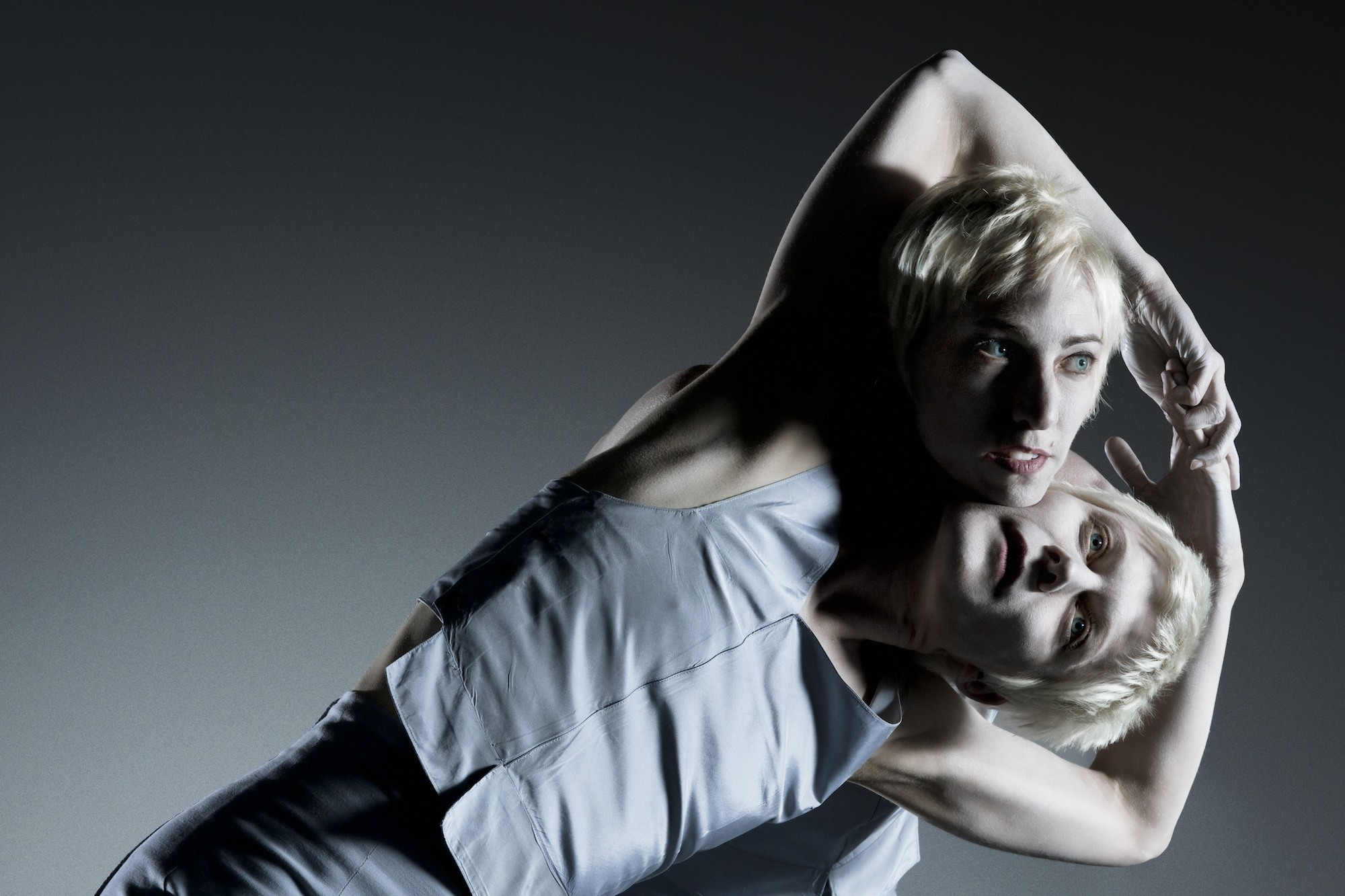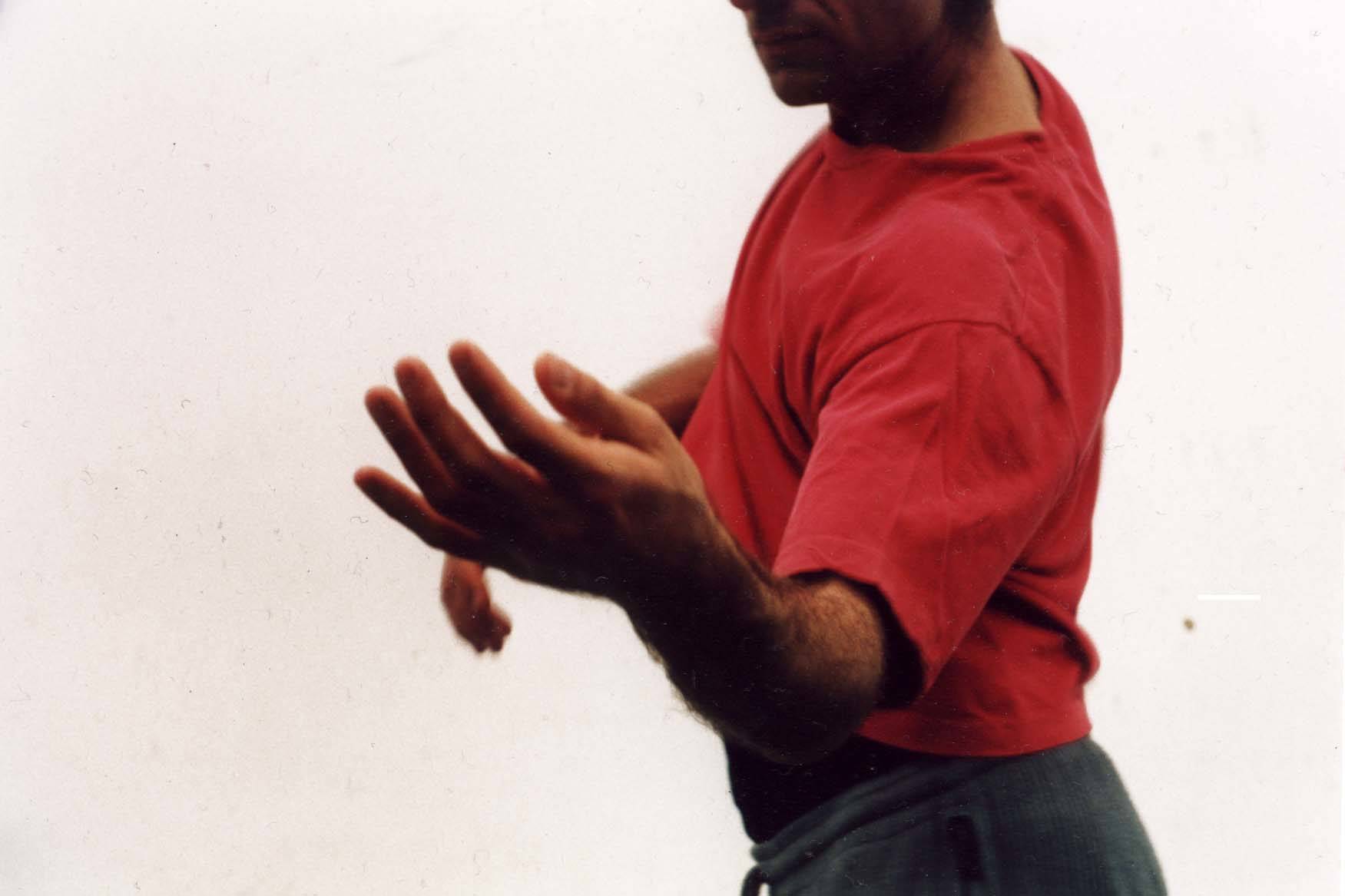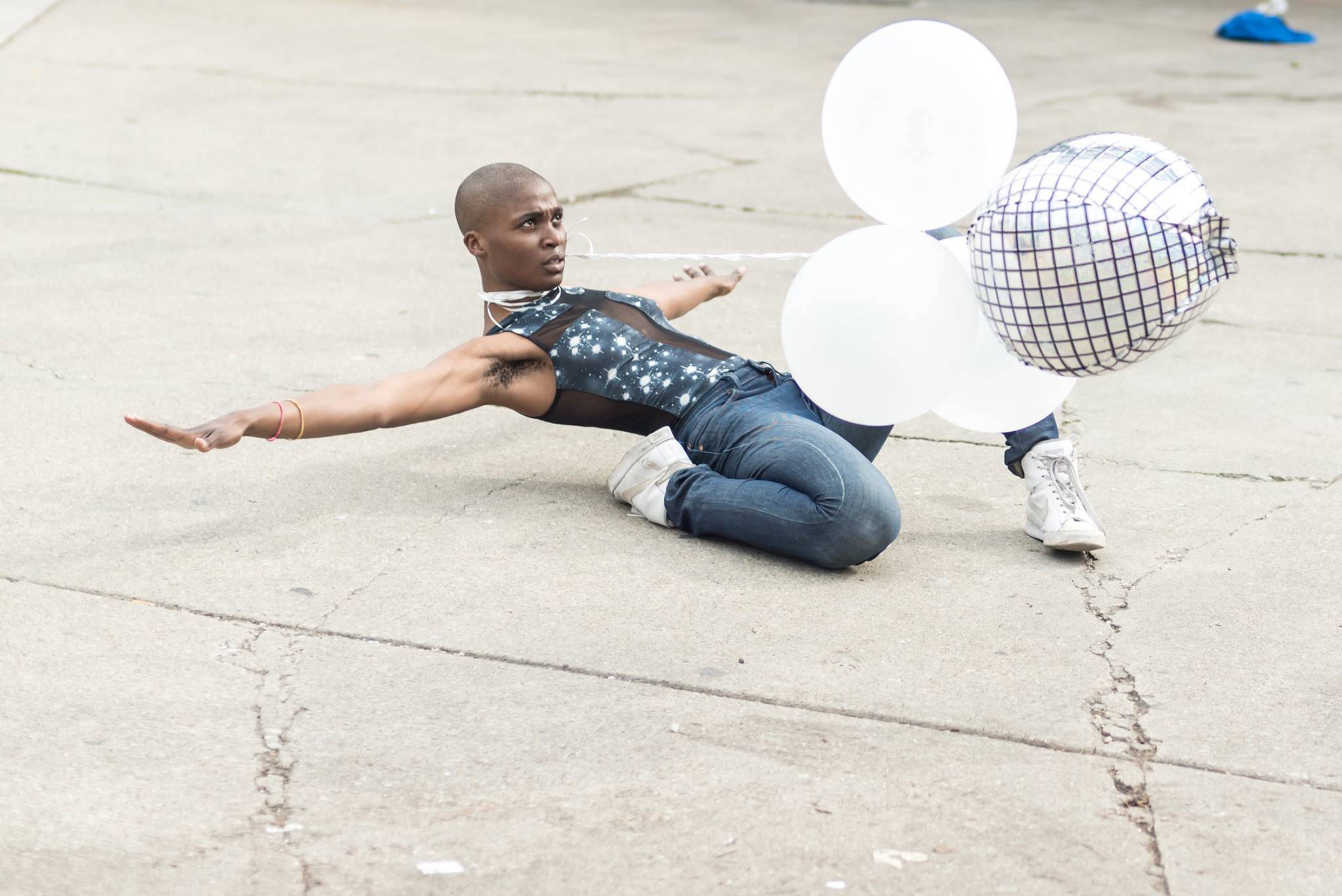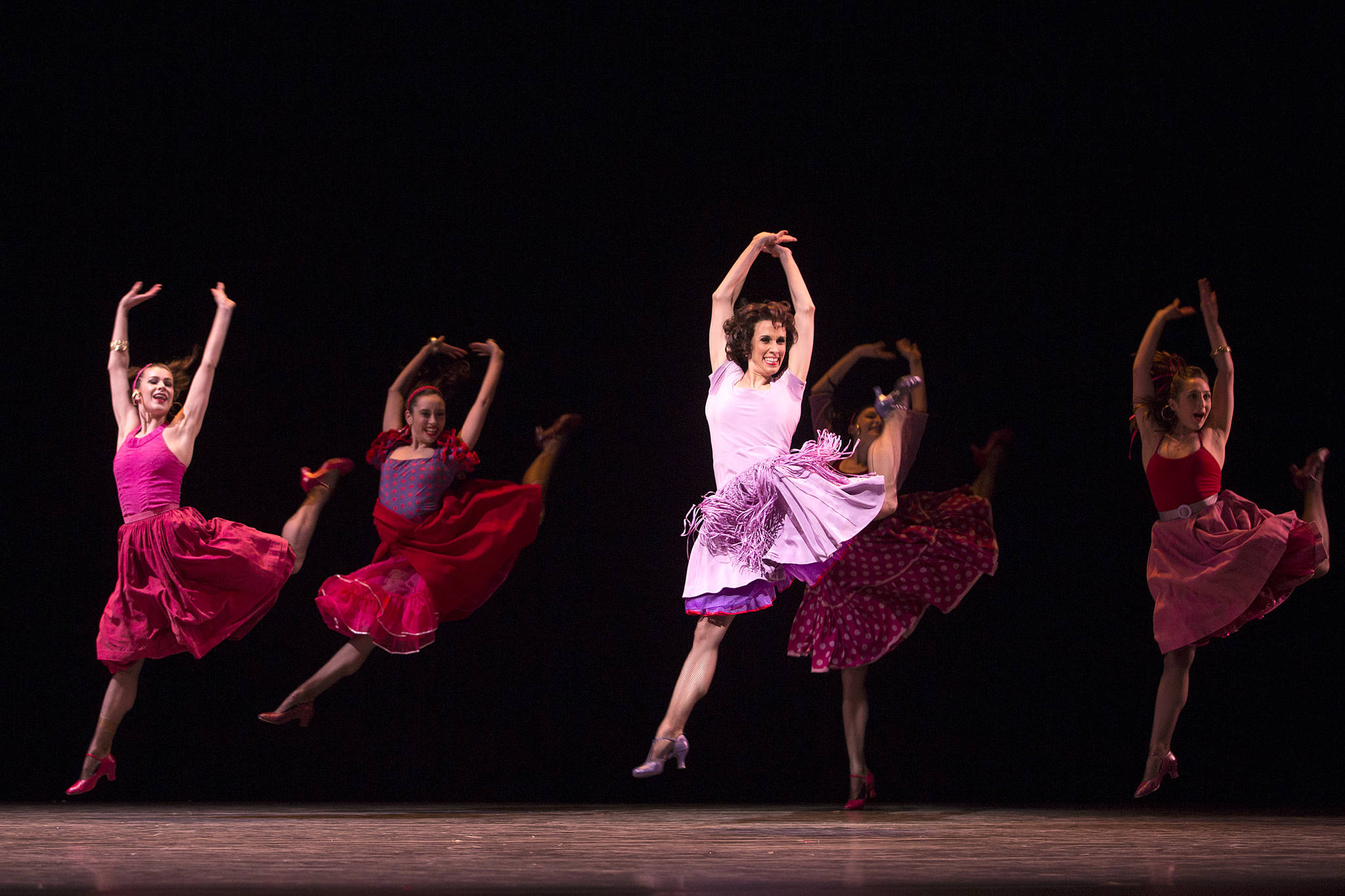Too often, when you see a set of props displayed onstage at the beginning of a performance, they become a kind of inventory—a checklist that the dancers need to work through before the end of the show. It takes some finesse to make an assortment of seemingly random items into a coherent world. Fortunately, Rachael Lincoln and Leslie Seiters have that quality in abundance. Their duet, an attic an exit, makes exquisite sense of an eccentric collection, so that by the end of an hour a stack of dishes, a pair of red plastic doll shoes, and two suit jackets hanging from the ceiling, among other things, are all related.
Lincoln and Seiters, a pair of almost-twins with bleached hair and powdery skin, travel back and forth in ACT’s intimate Eulalie Scandiuzzi Space, creating a series of doorways both real and imaginary. Sometimes walking through them, other times just peering out at us through an opening, they seem to be on a trip, complete with well-used suitcases. Their gaunt pallor makes us think briefly of prisoners, or refugees clinging to a few possessions, but rather than anguish, they manipulate their surroundings with a kind of detailed efficiency. It’s not a big kingdom, but it appears to be theirs.
It’s a realm of non sequitur, with suitcases used as gates and a string of beads as a serving of pasta. Like children, they transform objects to fulfill whatever needs they have, but their performance is not imitating stereotypical childish play. Instead, they are like skilled magicians—in a long sequence with the set of dishes, they run through a kind of ground-level juggling act, sliding saucers back and forth like sleight-of-hand artists or hockey players. The audience waits for what they think will be the inevitable crash, but at the end a single cup and saucer sits primly between them, the other dishes scattered on the floor.
Early on both dancers slip into the suspended jackets, using them as invisible partners that extend their range of motion or rein them in as they lope along. This sense of pushing boundaries extends after they take off the jackets. Their partnering has the interdependent support of contact improvisation without its yielding, indulgent qualities. They each often shift from manipulator to manipulated several times inside a longer phrase, making complex shapes that morph like human origami.
Alongside the other elements, the work is filled with the geometry of doors and windows. Beginning with an invisible line that Lincoln “pulls” from her hand and “stretches” between her feet (and at one point, uses to floss her teeth), both women make doorways from ropes and tape, and windows out of any and all body parts. Sometimes they pass through them and sometimes they just look out. Whether these are the exits of the title, or only a series of passages to other worlds, is up for grabs, but whatever they signify, the two dancers create them with detailed precision—right angles lining up clearly and transitions shifting like well-oiled hinges.
Some of that precision comes from sheer repetition. Lincoln and Seiters originally made attic more than 10 years ago, and have performed it multiple times since. It’s a luxury for dancers to develop that kind of long-term expertise with a work, and it’s a pleasure for us to see it in action. While they both have had full careers in varied places (Lincoln recently walked down the outside of Meany Hall in Trisha Brown’s Man Walking Down the Side of a Building), they clearly bring a shared attention to detail in returning to this work. Pale and glowing in Amiya Brown’s deft lighting design, these two attic-dwellers reel us into their orbit. an attic an exit. ACT, 700 Union St., 292-7676, acttheatre.org. $25. 8 p.m. Thurs., Nov. 3–Sat., Nov. 5; 2 p.m. Sun., Nov. 6.
dance@seattleweekly.com








